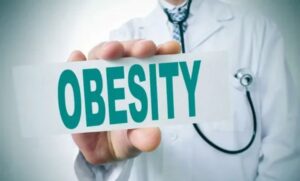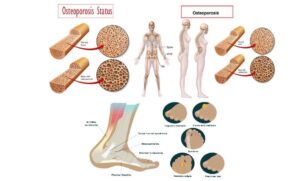The multitude of available food options in present times makes pursuing healthy living standards complicated for individuals. Fast food, along with sugary snacks and processed meals, exists throughout the entire world. Your wellness journey remains simple as it does not need countless complexities. Proper food choices help you achieve better health, along with improved appearance and longer physical activity. This article shows you how to choose your foods while explaining what to stay away from, and presents the effects of modern eating trends and the dangerous aspects of fast food. For brain health and nutrition tips, see our Healthy Brain Friendly Nutrition Guide.
What Does “Wellness” Mean?
Your well-being extends beyond physical disease avoidance. The definition of wellness requires a state of having a strong mind combined with physical well-being. Balanced eating forms one part of wellness, together with staying active and obtaining quality sleep, and stress management. Eating plays the major role among all components of this path to wellness. For personalized support on your wellness journey, consider booking a free consultation with our experts.
Eating well can:
- Improve your mood
- Boost your energy
- Support your immune system
- Help you live longer
- You can successfully avoid developing diabetes alongside obesity and heart disease.
- Placing yourself in an appropriate starting position demands knowledge about the needs of your body.
What You Should Eat for a Healthier Life?
The right eating requires neither dieting nor denying your favorite meals. Food selection refers to picking options that provide the necessary fuel to your body.
As a starting point, simply focus on these specific food groups:
1. Fruits and Vegetables
They contain essential vitamins, minerals together with fiber. These foods protect your body from infections while also keeping your digestive system in optimal condition.
- You should include five portions of food daily.
- Select vitamin-rich foods, which include spinach, carrots, berries, along oranges.
- All types of fresh produce, together with frozen items and canned goods without salt or sugar, remain excellent dietary choices.
2. Whole Grains
- Whole grains are excellent dietary sources of fiber that maintain your feeling of satiety. Your blood sugar maintains stability through their consumption.
- Opt for brown rice as an alternative to whole wheat bread, along with oats and quinoa.
- You should limit your consumption of white bread, together with sugary cereals.
3. Lean Proteins
- The human body needs protein to construct muscles while also healing tissue structures. It also supports hormone health.
- Include fish, chicken, eggs, beans, nuts, and tofu along with low-fat dairy products.
- Plant proteins deliver multiple heart health benefits to the human body.
4. Healthy Fats
- Not all fats are bad. The brain, together with your body, requires these nutrients for proper functioning.
- So include avocados and olive oil together with nuts and seeds, and purchase fatty fish, including salmon.
- Trans fats should be completely avoided, along with saturated fat consumption, which needs to be limited.
5. Plenty of Water
- The proper functioning of your entire body depends on water intake.
- Each day, your water consumption should reach between 6 to 8 glasses.
- Sugary beverages, including soda or energy drinks, should be restricted.
Foods You Should Avoid
Certain foods provide pleasant tastes, though they put your health at risk over time. Certain foods should be eliminated from your diet, while you should control their consumption less than usual.
1. Sugary Foods and Drinks
- High sugar intake causes weight problems while creating conditions for diabetes and dental health issues.
- Sweets disguised in sauces, cereals, and drinks should be avoided.
- People can fulfill their desire for sweets through fruit or dark chocolate.
2. Processed and Packaged Foods
- Numerous snack products contain excessive amounts of sugar, together with salt and unhealthy fats.
- Items such as chips alongside cookies with instant noodles and frozen pizzas belong to this grouping.
- You should always inspect the ingredient list of food products to identify unknown components.
3. Refined Carbohydrates
- After consumption, these food items trigger blood sugar surges that create intense hunger feelings.
- The total consumption of white rice and white bread products made with refined flour should be restricted.
- Replace them with whole-grain options.
4. Fried and Greasy Foods
- Full-fat fried foods increase your blood cholesterol and lead to coronary heart disease.
- Among popular food choices that harm health are French fries together with fried chicken, and doughnuts.
- You should replace your cooking methods with baking or grilling.
5. Too Much Red and Processed Meat
- Hot dogs and bacon, alongside sausage, trigger heart disease as well as oncologic growths.
- Consume red meat as a culinary feature only several times during one week.
- Consumers should focus on using plant-based proteins in addition to eating turkey or chicken.
Today’s Eating Patterns: What’s Going Wrong?
Family members used to prepare their meals at home before eating together while sharing meals. But now, everything has changed:
- People eat on the go.
- Fast food is cheap and easy.
- Few people eat breakfast or wait until late in the day.
- Snacks have become mini-meals.
| Eating Habit | Health Risk |
| Skipping meals | Slower metabolism, fatigue, and overeating |
| Late-night eating | Poor digestion, weight gain |
| Too much snacking | High calorie intake, poor nutrition |
| Fast food reliance | High cholesterol, diabetes, and obesity |
Fast food involves eating risks due to hidden dangerous ingredients
The delectable, rapid meals retain dangerous ingredients that customers usually do not identify. Consuming fast food poses problems for your wellness journey because of the following reasons:
1. High in Calories
A single burger meal exceeds 1,000 calories in total. Fast food provides fifty percent to more than fifty percent of your daily nutritional needs through one typical meal.
2. Too Much Salt
Eating excessive salt elevates your blood pressure levels. One serving of fast food contains sodium than dietary recommendations that maximum consumption should not exceed 2,300 mg per day.
3. Low in Nutrients
Fast food meals contain little to no fiber, along with a limited supply of vitamins and beneficial fats. Fast food contains no vital nutrients for your body.
4. Addictive Ingredients
Fast food ingredients containing salt combined with sugar and fat drive addiction-like craving behavior. Users end up eating superfluous amounts of food.
5. Linked to Serious Health Issues
Daily consumption of fast food meals leads to an increased probability of developing several health issues.
- Obesity
- Type 2 diabetes
- Heart disease
- Stroke
- Depression
The Process of Overcoming Bad Patterns
Modifying your eating choices requires no expert-level difficulty. A few user-friendly methods to start include:
1. Plan Your Meals
Make a weekly meal plan. A weekly meal plan keeps you from making spontaneous visits to fast food establishments.
2. Prepare Healthy Snacks
Store yogurt alongside nuts as well as fruits to prevent sudden hunger cravings.
3. Cook More at Home
Nutritious meals produced at home cost less than their restaurant counterparts. People should attempt basic recipes that utilize whole ingredients.
4. Drink More Water
Sometimes thirst feels like hunger. Start your meals with water consumption before you choose to snack.
5. Eat Mindfully
Take the time to savor your food properly during meals. Turn off your mobile phone then focus on eating your meal without any distractions.
A Simple One-Day Wellness Eating Plan
Here’s an example of a healthy eating day:
| Time | Meal Idea |
| Morning | Oatmeal with berries + green tea |
| Mid-morning | Apple slices with peanut butter |
| Lunch | Grilled chicken salad with olive oil dressing |
| Afternoon snack | Greek yogurt with honey and walnuts |
| Dinner | Baked salmon, brown rice, steamed broccoli |
| Evening | Herbal tea or a piece of dark chocolate |
Conclusion
Your wellness journey can succeed with any level of excellence achievable. It’s about progress, not perfection. Start small. Swap one fast food meal for a homemade one. Drink more water. You should serve one extra vegetable portion with your food. Repeated decision-making transforms into established habits throughout the period. For more tips and inspiration, visit our Visit Beargoal for health guidance.
The body you have now becomes your permanent residence, therefore, you must take care of it. Care for your body through healthy foods and purposeful eating, and intelligent life decisions. The person you will become in the future will express gratitude for these decisions. To support your journey, try our BMI Calculator, assess your goals with the Ideal Body Weight Calculator, and stay hydrated using the Water Intake Calculator.






